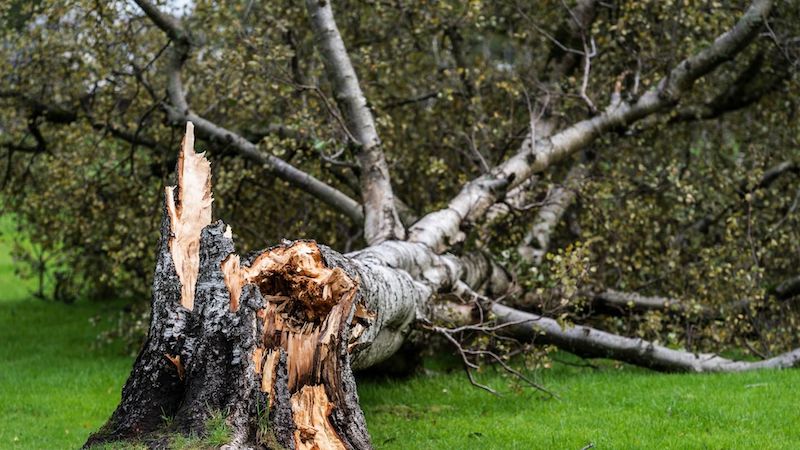Storm Clean-Up Tips!
After a storm hits your home, it may be harder to get back on track with just your normal cleaning supplies. Debris, flood waters, power outages, and broken tree limbs are all risks you may run into after a storm. Try a few of our storm clean-up tips for dealing with the aftermath to save your house from any further harm and keep you and your family safe while cleaning up.
Flooding
If there are heavy rains during a storm, it’s going to be hard to avoid flooding. If water gets into your home, be extremely cautious about getting it out. Turn off the power in your house only if the water hasn’t reached the same level as the electrical outlets in the room where your main breaker is. Otherwise, you could risk electrocution.
If your basement is under three feet of water because of the rainstorm, then just wait out the storm and the water level to drop before trying to clean it up. To help protect your basement from rain-induced flooding, make sure your yard slopes away from the house and your gutters are working properly.
To dry out a flooded basement, don’t pump water out too quickly or too early to lessen the likelihood of any structural damage. Once you do start pumping, remove just a foot of water on the first day and wait overnight to see if the water level is back up. If it is, then it’s too early to pump it out. When the water stops rising, pump out two to three feet each day until all of the water is out.
Drying Out Your House
When the storm is over, you might consider hiring a professional service for the most thorough clean-up. There are probably places that are wet in your house that you wouldn’t even think to check. With a professional service, you’re drying out your entire structure which can prevent mold from attacking your walls and floors. If you want to prevent your belongings from getting ruined in the basement, try putting them on cinder blocks or high shelves. Packing lighter boxes will help too, to make it easier to lift out of water from flooding.
Preventing Mold
Even if your salvaged items seem dry and clean, the floodwaters could have already set in to start growing mold not only on the walls but also inside walls, floors, and furniture. Mold only needs somewhere there is moisture and plant material for it to feed on, such as drywall paper and wood. To prevent the growth and spread of mold, you have to remove the surfaces that will provide a good host for the mold, clean what remains, clear the air, and rebuild while taking preventative measures.
You must seal off the area with plastic over the doorway of the affected area, and clear out all absorbent materials, which include carpet, drywall, and paper items. You have to loosen the mold spores and then suck them up with a HEPA-filter vacuum. An exterminator can spray the wood with Bora-Care with Mold-Care, a borate solution that fights mold and protects against termites, carpenter ants, and wood rot.
To prevent mold from coming back, slope soil away from the house, waterproof the roof by tying it down with extra fasteners and special edging to resist wind, and assemble walls with interior airflow so moisture can evaporate. Consider using paperless drywall and insulation that contains nothing for mold to feed on.
Handling Damaged Trees
High winds and heavy rains can cause fallen trees, which could be considered one of the most dangerous and damaging outcomes of powerful storms. If the main trunk of the tree is broken or split, then removal is a good idea. Call a certified arborist to take the tree down to prevent personal injury. If the damage is less severe, remove any damaged branches you can safely reach from the ground. If you cannot reach them yourself, call an arborist to finish the work. If the tree starts to rot instead of heal, there is a strong chance that a limb or the whole tree could fall without warning, so be sure to get it cut down.
Let Us Help You
If any of the restoration projects from a storm require getting rid of a lot of flood-damaged or mold-infested items, call Bargain Dumpster at (803) 573-0003 to help haul your clean-up debris to the nearest landfill.






